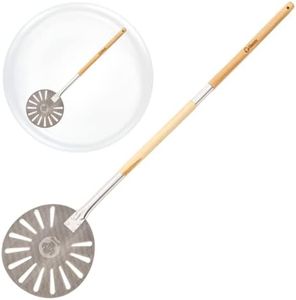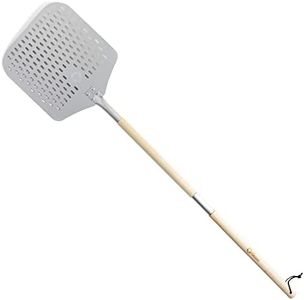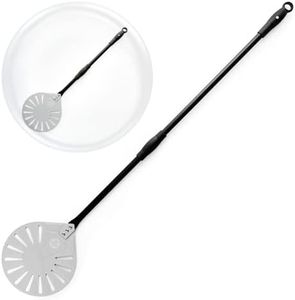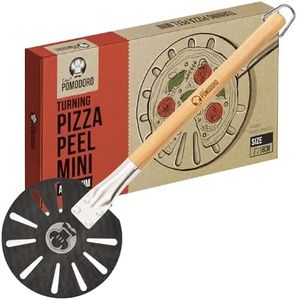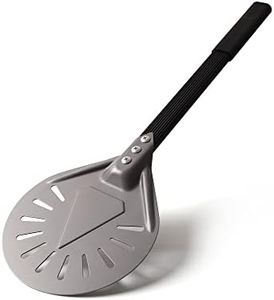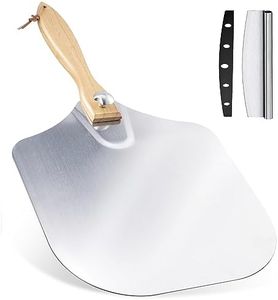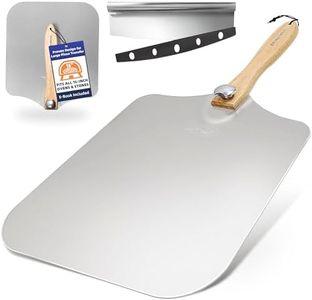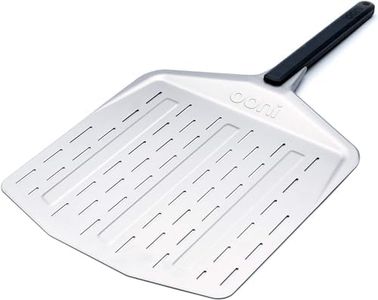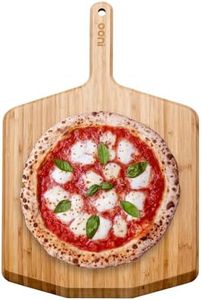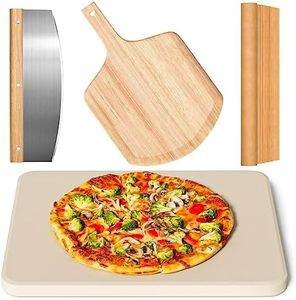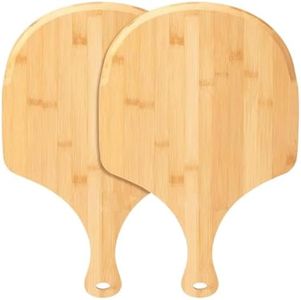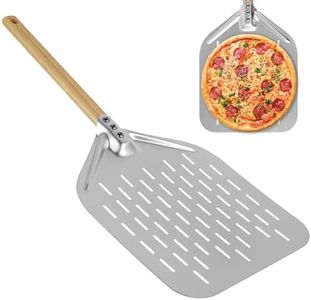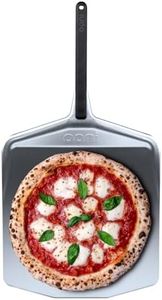We Use CookiesWe use cookies to enhance the security, performance,
functionality and for analytical and promotional activities. By continuing to browse this site you
are agreeing to our privacy policy
10 Best Pizza Peels
From leading brands and best sellers available on the web.By clicking on a link to a third party's website, log data is shared with that third party.
Buying Guide for the Best Pizza Peels
Choosing the right pizza peel can make a big difference in how easy and enjoyable it is to bake pizzas at home or in a commercial setting. The main job of a pizza peel is to slide pizzas in and out of the oven smoothly, without making a mess or burning yourself. To pick the best one for you, think about the size of your pizzas, the type of oven you use, and whether you want something that's easy to store and clean.MaterialThe material of a pizza peel affects its weight, durability, and how easily the dough slides off. The most common materials are wood, metal (usually aluminum or stainless steel), and composite. Wooden peels are classic, gentle on dough, and less likely to stick, but they can be harder to clean and might warp over time. Metal peels are thin, lightweight, and great at sliding under pizzas, but dough can stick more easily if not dusted with flour or cornmeal. Composite peels offer a mix of durability and ease of cleaning, but may not have the same traditional feel. Choose wood if you value tradition and want less sticking, metal for easy sliding and thinness, and composite for a mix of both.
Size (Blade and Handle)Size includes both the blade (the flat part that holds the pizza) and the handle. The blade needs to be big enough for your typical pizza size but not so large that it's hard to handle or fit in your oven. Blades usually range between 12 to 16 inches in width for home use. Handles can be as short as a few inches for countertop ovens or much longer (20 inches or more) for deep, wood-fired ovens. Pick a size that matches your pizza's diameter and the depth of your oven, and a handle length that keeps your hands safely away from the heat.
Blade ThicknessThe thickness of the blade affects how easily you can slide the peel under a pizza. Thinner blades, often found on metal peels, are better for lifting pizzas that are already baking. Thicker wooden peels are more suitable for assembling pizzas and launching them into the oven. If you struggle to get under pizzas, a thin-bladed metal peel might be best for you, while wooden peels are good for beginners who need a bit of forgiveness.
ShapePizza peels come in rectangular, round, and sometimes square shapes. Rectangular and square peels are versatile and can handle pizzas as well as bread or other baked goods, while round peels closely match the shape of pizzas and are easier to maneuver in small or round ovens. Think about what you'll be baking most and what matches your oven shape best.
Ease of CleaningHow easy a pizza peel is to clean will affect how often you use it and how long it lasts. Wooden peels should usually be wiped clean rather than washed, while metal and composite peels can often be rinsed or even put in the dishwasher. If you want the lowest maintenance, a metal or composite peel is best; if you don’t mind a bit of extra care for a traditional feel, wood is fine.
WeightThe weight of the peel affects how easy it is to handle, especially when transferring heavy pizzas. Lighter peels are easier for most people to manage, particularly for frequent use or for kids, while heavier peels can feel sturdier but may be tiring. If you prioritize ease of use, look for a lightweight option; if sturdiness is most important, a heavier peel might be a better fit.
